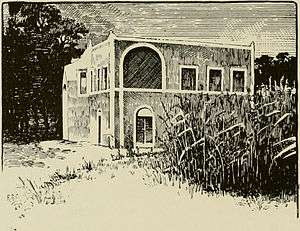Sultanate of Lahej
| Sultanate of Lahej | ||||||||||||||||
| سلطنة لحج | ||||||||||||||||
| ||||||||||||||||
 Flag | ||||||||||||||||
 Map of the Federation of South Arabia, with Lahej at bottom left | ||||||||||||||||
| Capital | Al-Hawtah | |||||||||||||||
| Religion | Sunni Islam | |||||||||||||||
| Government | Sultanate | |||||||||||||||
| Historical era | Aden Protectorate | |||||||||||||||
| • | Independence from Ottomans | 1728 1728 | ||||||||||||||
| • | British invasion | 1839 1967 | ||||||||||||||
| ||||||||||||||||
Lahej (Arabic: لحج Laḥij), the Sultanate of Lahej (Arabic: سلطنة لحج Salṭanat Laḥij), or, sometimes, the Abdali Sultanate (Arabic: سلطنة العبدلي Salṭanat al-‘Abdalī), was a Sheikdom based in Lahej in Southern Arabia. The Sultanate became self-ruled in 1728 and gained independence in 1740. In 1839, the Sultanate became Aden Protectorate of the British Empire, though nominally the 'Abdali Sultan retained his status. The Aden protectorate was briefly ruled again by the Ottomans during World War I, but regained by the British and absorbed into Federation of South Arabia in 1963. The 'Abdali dynasty was officially abolished in 1967, with the proclamation of South Yemen.
History

from an 1898 photograph by Henry Ogg Forbes.
Independent Sultanate
Lahej was sultanate of the 'Abdali dynasty. In 1740 the 'Abdali sultan became independent.[1] The Sultanate of Lahej became an independent entity, from 1728 to 1839.
Non-independent
British protectorate
The Sultanate of Lahej lost its independence to the British, after the Royal Navy Aden Expedition attack in 1839. The Sultan signed several treaties with the British.[2] The 1863 opening of the Suez Canal caused the formation of the Aden Protectorate
The sultanate was one of the original "Nine Cantons" that signed individual British protectorate agreements with Great Britain, that in 1869 were joined together to become the Aden Protectorate. The Suez Canal also opened in 1869.
Ottoman rule
During World War I, the Ottoman Empire subjugated the Sultanate area.[2] In 1918 Lahej was liberated from Ottoman Empire suzerainty and restored as a British protectorate.
Reinstalled British protectorate and Federation of South Arabia
Lahej typically enjoyed good relations with the British, despite the accidental killing of Sultan Fadhl ibn Ali al Abdali by British troops in 1918 who mistook him for an enemy Ottoman Turk soldier. In 1948, the Subayhi tribal area was absorbed into their sultanate.[2]
However, by 1958, Britain was worried that the sultan at the time, Ali bin Abd al Karim al Abdali, an Arab nationalist, would refuse to join the British-sponsored Federation of Arab Emirates of the South, and had him deposed. Lahej ended up joining the Federation and later the Federation of South Arabia in 1963.
Aftermath
South Yemen
In 1967 the new Communist regime expelled the Abdali Sultan. The dynasty of the Sultanate of Lahej was abolished with the founding of the Socialist state of People's Democratic Republic of Yemen (1967–1990).
Unified Yemen
The former territory of the Sultanate has been within the Republic of Yemen since its unification in 1990.[2]
Rulers
The Sultans of Lahej had the title of Sultan Lahj.[3]
Abdali Sultans

- 1728–1742 al-Fadl I ibn `Ali al-Sallami al-`Abdali
- 1742–1753 `Abd al-Karim I ibn al-Fadl al-`Abdali
- 1753–1775 `Abd al-Hadi ibn `Abd al-Karim al-`Abdali
- 1775–1791 al-Fadl II ibn `Abd al-Karim al-`Abdali
- 1791–1827 Ahmad I ibn `Abd al-Karim al-`Abdali
- 1827–Nov 1839 Muhsin ibn al-Fadl al-`Abdali (1st time)
- Nov 1839 – Dec 1839 Ahmad II ibn Muhsin al-`Abdali (1st time)
- Dec 1839 – Aug 1846 Muhsin ibn al-Fadl al-`Abdali (2nd time)
- 11 Aug 1846 – Sep 1846 Sayyid Isma`il ibn al-Hasan al-Husayni (usurper)
- Sep 1846 – 30 Nov 1847 Muhsin ibn al-Fadl al-`Abdali (3rd time)
- Dec 1847 – 20 Jan 1849 Ahmad II ibn Muhsin al-`Abdali (2nd time)
- Mar 1849 – 7 Apr 1863 `Ali I ibn Muhsin al-`Abdali
- Apr 1863 – 1863 al-Fadl III ibn `Ali al-`Abdali (1st time)
- 1863 – 5 Jul 1874 al-Fadl IV ibn Muhsin al-`Abdali
- 5 Jul 1874 – 27 Apr 1898 al-Fadl III ibn `Ali al-`Abdali (2nd time)
- 29 Apr 1898 – Mar 1914 Ahmad III ibn al-Fadl al-`Abdali (from 9 Nov 1901, Sir Ahmad III ibn al-Fadl al-`Abdali)
- Mar 1914 – 4 Jul 1915 `Ali II ibn Ahmad al-`Abdali (from 8 Oct 1914, Sir `Ali II ibn Ahmad al-`Abdali)
- 13 Jul 1915 – 18 Jun 1947 `Abd al-Karim II ibn al-Fadl al-`Abdali (from 1 Jan 1918, Sir `Abd al-Karim II ibn al-Fadl al-`Abdali)
- 18 Jun 1947 – 21 May 1952 al-Fadl V ibn `Abd al-Karim al-`Abdali
- 4 Jun 1952 – 10 Jul 1958 `Ali III ibn `Abd al-Karim al-`Abdali (from 1 Jan 1955, Sir `Ali III ibn `Abd al-Karim al-`Abdali)
- 10 Jul 1958 – Aug 1967 al-Fadl VI ibn `Ali al-`Abdali (acting with style Na'ib to 8 Dec 1958)
Economy
British Empire
The Sultanate of Lahej and others surrounding the Port of Aden had economic influence by supporting the important trade economy of the British Empire from South Asia. Early 19th century industrial Britain, with its rapidly expanding economy, needed improved and reliable communication with British India and the East India Company operations.
The 1863 opening of the Suez Canal initiated further British trade protection strategies, securing the port of Adan and surroundings to serve the Red Sea shipping routes using its new canal. The Sultanate was part of an effort of the British Empire to protect the East India Route, the sea route between the Mediterranean and India, in and through the southern coasts of the Arabian Peninsula.
Resources
As of 1920, the Lahej region was producing salt, from salt mines owned by the Ottoman government, that passed through the Sultanate for shipping.[4]
See also
- Aden Protectorate
- Colony of Aden (1937–63)— Crown colony.
- Fadhli Sultanate
- Federation of Arab Emirates of the South (1959–62)
- Federation of South Arabia (1962–67)
- Protectorate of South Arabia (1962–67)
References
External links
 Media related to Colony of Aden at Wikimedia Commons
Media related to Colony of Aden at Wikimedia Commons
Coordinates: 13°06′00″N 45°28′00″E / 13.1°N 45.4667°E